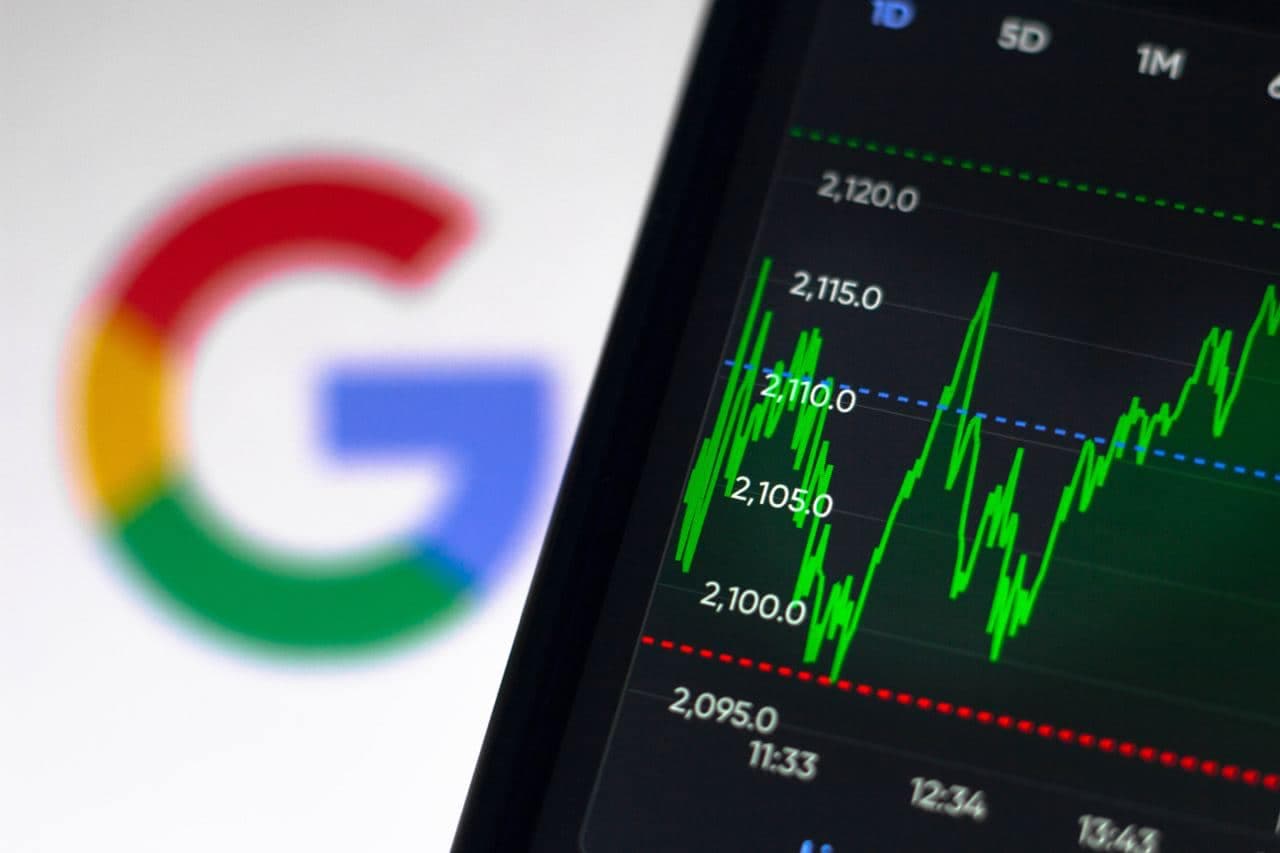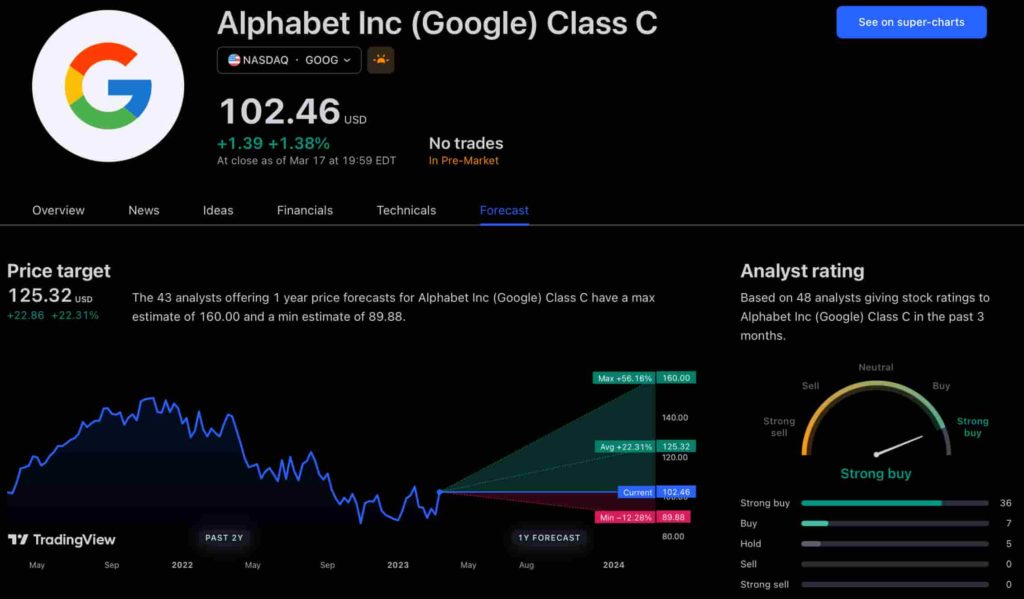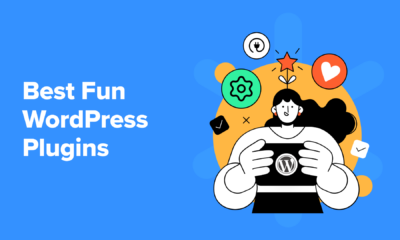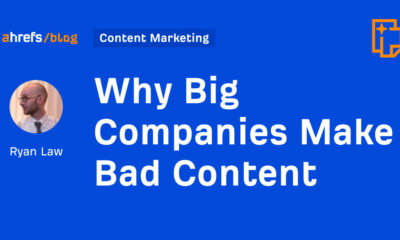The new app is called watchGPT and as I tipped off already, it gives you access to ChatGPT from your Apple Watch. Now the $10,000 question (or more accurately the $3.99 question, as that is the one-time cost of the app) is why having ChatGPT on your wrist is remotely necessary, so let’s dive into what exactly the app can do.
NEWS
How Much Is PPC Fraud Really Costing Your Business?

How Do These Types of PPC Fraud Work?
Broadly speaking, there are two types of ways you can fall victim to PPC fraud:
- Human interaction.
- Automated interaction.
The most common ways you’ll find this kind of fraudulent click action are as follows:
Repetitive Clicks
The simplest way to commit click fraud is to simply click on a paid ad every time you see it.
Unhappy customers, disgruntled ex-employees, or other people with a grudge against your company are happy to waste a few bucks of your marketing budget for fun.
Organized Click Campaigns
Leveling up on the repetitive clicks here, if you really want to cause some damage you can pay for sustained traffic to any link.
You may have heard of click farms, which are organizations designed to generate clicks for a whole variety of reasons, from social media boosting to vindictive clicking on paid ads.
Bot Traffic
Automated bots have become a lot more sophisticated in recent years, including being designed to mimic human behavior on websites.
Bots can either be built into software such as apps, and harnessed as a co-ordinated network known as a ‘botnet’, or operated from servers in specific locations, such as click farms.
In recent years, there have been several high profile cases of organized crime syndicates operating ad fraud networks.
The most famous of which are Methbot, Hyphbot, and 3ve (Eve) which all made millions from generating bot traffic onto paid ad campaigns.
Bots and web crawlers aren’t always malicious, with many websites using this automated traffic to collect data and collate information.
However, the technology is a potent way to generate that traffic onto paid ads and collect the payout for unscrupulous ad fraudsters.
It is estimated that around half of all internet traffic today is automated.
This includes bots and web crawlers for non-malicious purposes.
On top of this, it is estimated that anything up to 25% of traffic online is generated for fraudulent means.
This Type of Fraud Doesn’t Happen to My Business, Does It?
Fraud affects pretty much every type of PPC campaign.
Although some of the most targeted industries might be quite obvious, some of the others might come as more of a surprise.
On-demand and local services often have a high cost-per-click and relatively fierce local competition.
For this reason, click fraud can be rife in industries such as:
- Locksmiths.
- Plumbers.
- Waste disposal.
- Building and remedial works.
- Orthodontists and specialist health services.
- Tourism-focused services.
Being on-demand, many of these businesses would expect that people searching for them to be ready to purchase.
There’s not a lot of research time when looking for an emergency plumber or a locksmith.
As such, the conversion on their clicks should be relatively high, which makes a $40-50 cost-per-click seem worthwhile.
A recent case study on a waste disposal service in Australia uncovered a practice that is all too common.
One competitor had orchestrated a campaign of clicking on the paid links of other businesses in the area, and only the combined efforts of several business owners using click fraud detection software uncovered the perpetrator.
This type of competitor click fraud is alarmingly common.
But you’re not an on-demand service?
You’re a startup or small business running a low key banner ad campaign, simple YouTube video ads or perhaps popping some ads on Facebook and Instagram.
Or maybe you work for an agency managing a broad range of client’s PPC ads.
If you run display ads on any network from Google or Bing, to Facebook’s increasingly diverse portfolio, you are in prime position to fall victim to ad fraud.
The Impact of PPC Fraud
The financial impact of PPC fraud is going to be one of the biggest concerns for any company.
Beyond being out of pocket, there are other ways that click fraud and ad fraud can cause problems to your marketing campaign.
Being knocked down the search engine result pages, or worse still, completely off them, is going to mean a lot of missed opportunities.
If click fraud is effective, and it uses up your daily budget, your target audience won’t see your ad.
Even if the money gets refunded down the line, it is a case of missed opportunities.
How many potential customers may have seen your ad and clicked on it that day?
That’s an income that can’t be replaced even if you do get the fraudulent ad spend replaced.
For businesses that focus the majority of their marketing on PPC advertising, this disruption can cause a knock-on effect on their business development.
Small businesses and startups increasingly rely on PPC advertising in important phases, such as product launches or for seasonal peaks.
Being hit for anything up to 20% of your marketing budget is one thing, but it’s the loss of income that will be much more important for most.
So How Much Is Click Fraud Costing My Business?
This depends on your industry and ad spend.
Ilan Missulawin, CMO of ClickCease, says, “We find that across all our accounts, most clients see anything between 4-20% of their PPC ads are subjected to fraud.”
It’s hard to define an average amount that companies spend on PPC ads, with the range running from $1,000 a month to $50,000 a month or more.
By some estimates, U.S.-based law firms spend anything up to $100,000 on ads each month.
Online gambling sites will spend multiples of hundreds of thousands monthly on PPC advertising, with some of the most lucrative potential returns.
Taking an average of 15% off those totals, and it becomes obvious why this form of fraud is so popular.
So, if you’re working with a monthly marketing budget of $20,000, you can reasonably expect that around $3,000 of that is going to the fraudsters.
“Most companies are subject to some level of click fraud on their Google or Bing Ads, it’s just a case of how much,” Missulawin says. “It’s not always constant or consistent, but it happens, and much more regularly than people may think.”
Although there have been some recent cases of large advertisers suing fraudsters, in general, the practice of ad fraud isn’t one that is being tackled.
In fact, the stats for Google ad fraud have been consistent for years, and despite the odd closure of a click farm or fraudulent operation shut down, there are limited restrictions legally.
So what click fraud or ad fraud protection processes are in place currently?
What Are the Advertisers Doing to Tackle Fraud on PPC Ads?
Google attempts to fix issues with invalid clicks.
For some repeat clicks, or clicks from obvious fraudulent sources, Google automatically blocks these and will automatically issue a refund (although this can take time).
If you spot something that you think is fraudulent on your Google Ads you can raise this with their customer support for processing.
However, the definition and analysis of what makes an invalid click may be part of the issue here.
Google doesn’t focus on creating anti-click fraud software and, in fact, some issues that should be identified as fraudulent can often be missed.
The same applies to Bing, Facebook, Taboola, Outbrain, et al.
The way sources of clicks are identified is where the problems can start. Google treats each visit from each IP address as a unique occasion.
So if you have a cellphone that clicks on your ads in one location, then uses a VPN or logs on to a different wifi network and clicks again, it will look like a new visitor.
Organized click fraud often has processes to mask or change IP addresses regularly, making it hard for Google’s algorithms to keep up.
What Can I Do to Beat Click Fraudsters?
When it comes to avoiding click fraud, software solutions like ClickCease are without a doubt the easiest way to deal with everything that comes your way.
There are methods you can use to do it yourself too, so we’ll take a quick look at both options.
Anti-Click Fraud Software
There are plenty of choices, but ClickCease is the industry-leading option for good reason.
How does it work?
ClickCease assigns each device that clicks on your ads a unique device ID which helps to identify patterns of fraudulent activity.
This means that even if that IP address is changed, it’ll be clear that a specific device is a repeat visitor.
When it comes to botnets and click farms, ClickCease also keeps a blacklist of suspicious sources, so if there is a shady character doing the rounds you’ll be able to block them.
Using software such as ClickCease also saves you a lot of time doing the fiddly things that come as part of the manual option.
And, with a handy visual dashboard, you can view things like fraudulent sources locations, times, most affected campaigns and even get an overview of the type of traffic clicking on your ads.
For advertisers running multiple campaigns on Google or Bing, or for any business with a high cost-per-click, ClickCease will likely save you time, money, and stress.
The Manual Option
You don’t have to pay to block click fraud and ad fraud on your Google Ads or Microsoft Advertising networks.
Tweaking the settings in your Ads dashboard will limit your exposure, but be warned, with increasingly sophisticated techniques being deployed, these are not 100% guaranteed to work.
- Timing: If you run your ads 24/7, look at when is the most effective time to run your ads and limit your chances of exposure to fraud.
- Location: Target specific areas, the more specific the better. Also, try and exclude locations where you think fraud on your ads may happen.
- Negative keywords: Fraudsters often target quite broad search terms, so get specific with your keyword tagging and don’t be afraid to use negative keywords.
- Monitor ads daily: Make sure to regularly check your ads for suspicious IP addresses and activity. Spikes in activity but without corresponding conversions may indicate fraud in your ads.
Ready to Beat Click Fraud?
If you think your Google or Microsoft Ads are being targeted by ad fraud or click fraud, you can check for free using ClickCease.
Simply sign up for their 7-day free trial, register your site and your ad campaigns, and get a look at what’s really happening.
Eliminate PPC fraud on your ads and take back control over your marketing spend.
Sign up for your free 7-day ClickCease trial here.
The opinions expressed in this article are the sponsor’s own.
Facebook Faces Yet Another Outage: Platform Encounters Technical Issues Again

Uppdated: It seems that today’s issues with Facebook haven’t affected as many users as the last time. A smaller group of people appears to be impacted this time around, which is a relief compared to the larger incident before. Nevertheless, it’s still frustrating for those affected, and hopefully, the issues will be resolved soon by the Facebook team.
Facebook had another problem today (March 20, 2024). According to Downdetector, a website that shows when other websites are not working, many people had trouble using Facebook.
This isn’t the first time Facebook has had issues. Just a little while ago, there was another problem that stopped people from using the site. Today, when people tried to use Facebook, it didn’t work like it should. People couldn’t see their friends’ posts, and sometimes the website wouldn’t even load.
Downdetector, which watches out for problems on websites, showed that lots of people were having trouble with Facebook. People from all over the world said they couldn’t use the site, and they were not happy about it.
When websites like Facebook have problems, it affects a lot of people. It’s not just about not being able to see posts or chat with friends. It can also impact businesses that use Facebook to reach customers.
Since Facebook owns Messenger and Instagram, the problems with Facebook also meant that people had trouble using these apps. It made the situation even more frustrating for many users, who rely on these apps to stay connected with others.
During this recent problem, one thing is obvious: the internet is always changing, and even big websites like Facebook can have problems. While people wait for Facebook to fix the issue, it shows us how easily things online can go wrong. It’s a good reminder that we should have backup plans for staying connected online, just in case something like this happens again.
NEWS
We asked ChatGPT what will be Google (GOOG) stock price for 2030

Investors who have invested in Alphabet Inc. (NASDAQ: GOOG) stock have reaped significant benefits from the company’s robust financial performance over the last five years. Google’s dominance in the online advertising market has been a key driver of the company’s consistent revenue growth and impressive profit margins.
In addition, Google has expanded its operations into related fields such as cloud computing and artificial intelligence. These areas show great promise as future growth drivers, making them increasingly attractive to investors. Notably, Alphabet’s stock price has been rising due to investor interest in the company’s recent initiatives in the fast-developing field of artificial intelligence (AI), adding generative AI features to Gmail and Google Docs.
However, when it comes to predicting the future pricing of a corporation like Google, there are many factors to consider. With this in mind, Finbold turned to the artificial intelligence tool ChatGPT to suggest a likely pricing range for GOOG stock by 2030. Although the tool was unable to give a definitive price range, it did note the following:
“Over the long term, Google has a track record of strong financial performance and has shown an ability to adapt to changing market conditions. As such, it’s reasonable to expect that Google’s stock price may continue to appreciate over time.”
GOOG stock price prediction
While attempting to estimate the price range of future transactions, it is essential to consider a variety of measures in addition to the AI chat tool, which includes deep learning algorithms and stock market experts.
Finbold collected forecasts provided by CoinPriceForecast, a finance prediction tool that utilizes machine self-learning technology, to anticipate Google stock price by the end of 2030 to compare with ChatGPT’s projection.
According to the most recent long-term estimate, which Finbold obtained on March 20, the price of Google will rise beyond $200 in 2030 and touch $247 by the end of the year, which would indicate a 141% gain from today to the end of the year.
Google has been assigned a recommendation of ‘strong buy’ by the majority of analysts working on Wall Street for a more near-term time frame. Significantly, 36 analysts of the 48 have recommended a “strong buy,” while seven people have advocated a “buy.” The remaining five analysts had given a ‘hold’ rating.

The average price projection for Alphabet stock over the last three months has been $125.32; this objective represents a 22.31% upside from its current price. It’s interesting to note that the maximum price forecast for the next year is $160, representing a gain of 56.16% from the stock’s current price of $102.46.
While the outlook for Google stock may be positive, it’s important to keep in mind that some potential challenges and risks could impact its performance, including competition from ChatGPT itself, which could affect Google’s price.
Disclaimer: The content on this site should not be considered investment advice. Investing is speculative. When investing, your capital is at risk.
NEWS
This Apple Watch app brings ChatGPT to your wrist — here’s why you want it

ChatGPT feels like it is everywhere at the moment; the AI-powered tool is rapidly starting to feel like internet connected home devices where you are left wondering if your flower pot really needed Bluetooth. However, after hearing about a new Apple Watch app that brings ChatGPT to your favorite wrist computer, I’m actually convinced this one is worth checking out.
-
SEARCHENGINES7 days ago
Daily Search Forum Recap: April 29, 2024
-
SEARCHENGINES6 days ago
Daily Search Forum Recap: April 30, 2024
-

 MARKETING6 days ago
MARKETING6 days agoHow To Develop a Great Creative Brief and Get On-Target Content
-

 SEO7 days ago
SEO7 days agoGoogle’s John Mueller On Website Recovery After Core Updates
-

 WORDPRESS6 days ago
WORDPRESS6 days ago13 Best Fun WordPress Plugins You’re Missing Out On
-

 SEO5 days ago
SEO5 days agoWhy Big Companies Make Bad Content
-

 SEO5 days ago
SEO5 days agoHow To Drive Pipeline With A Silo-Free Strategy
-

 SEO6 days ago
SEO6 days agoOpenAI To Show Content & Links In Response To Queries



